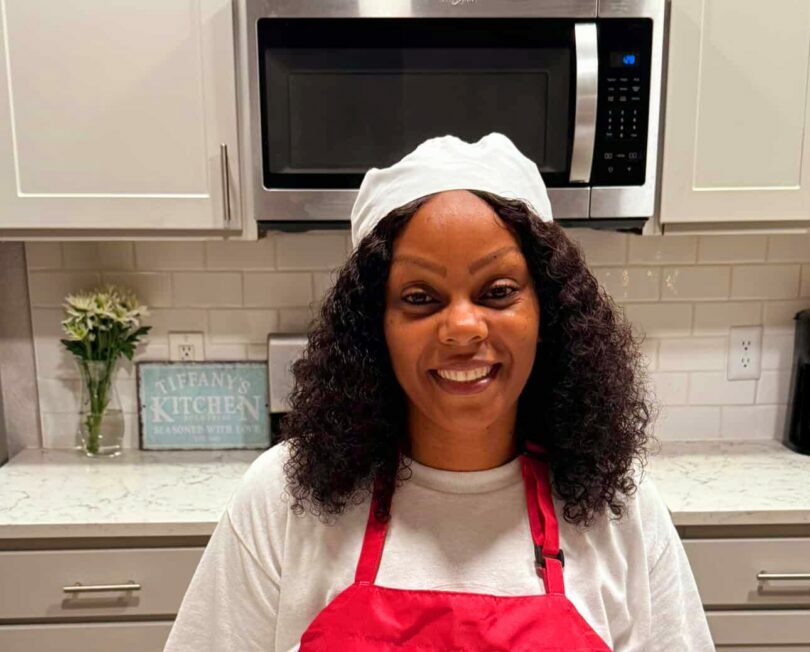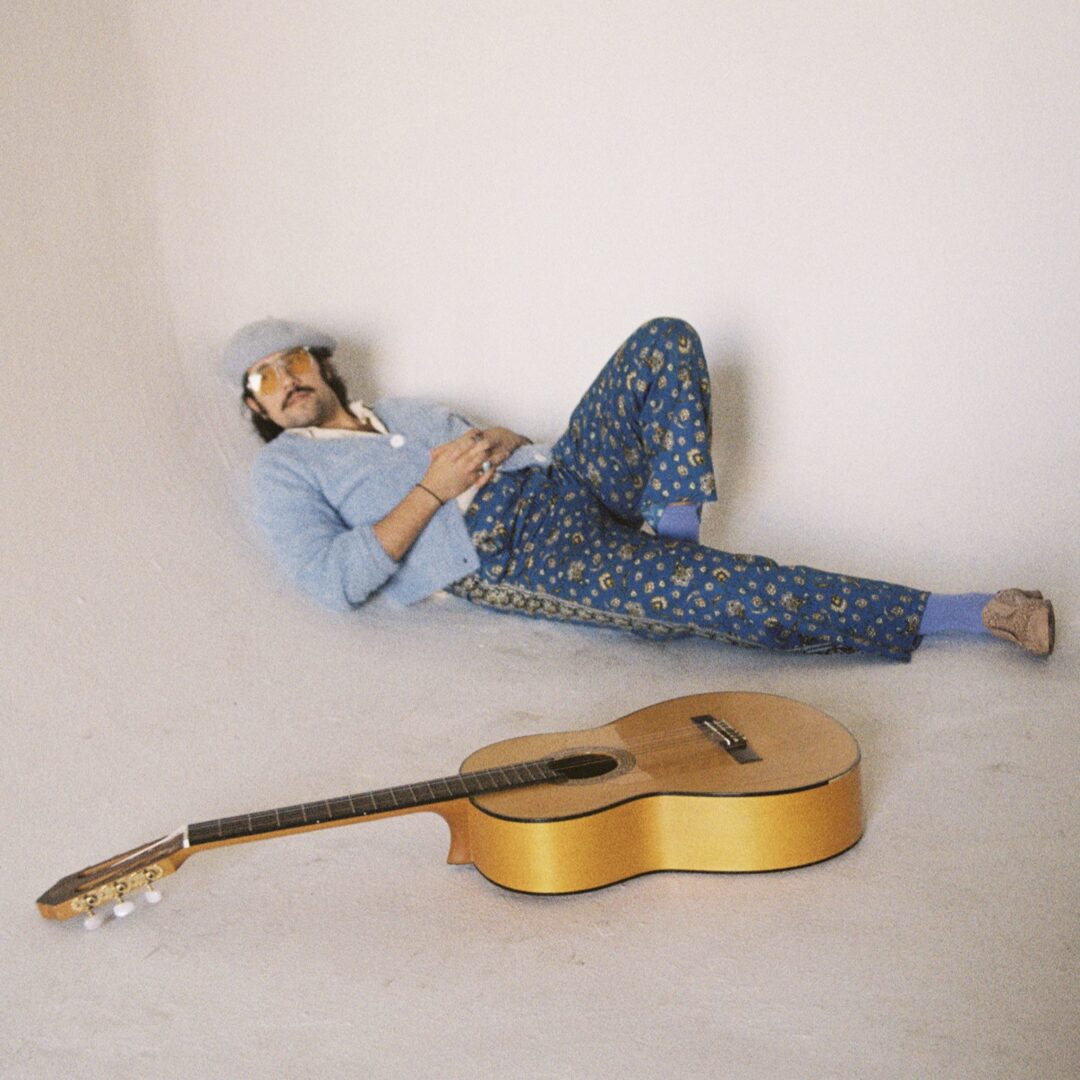We were lucky to catch up with Mark Travis Rivera recently and have shared our conversation below.
Mark Travis, thank you so much for joining us today. Let’s jump right into something we’re really interested in hearing about from you – being the only one in the room. So many of us find ourselves as the only woman in the room, the only immigrant or the only artist in the room, etc. Can you talk to us about how you have learned to be effective and successful in situations where you are the only one in the room like you?
I was 17 when I founded marked dance project, a contemporary dance company featuring disabled and non-disabled dancers in New Jersey, where I was raised. It would make me the youngest person in the United States to found and artistically direct an integrated company. While I made many mistakes as a young person navigating the arts non-profit, I always knew that being a young Puerto Rican, disabled, and visibly queer teenager meant that I had additional pressure to work twice as hard and lacked the same level of grace that would be extended to my white counterparts. I can’t just point to one thing that led to my success, but one thing I know contributed to my success was that I was never willing to remain silent and dared to use my voice and lived experience to hold others and myself accountable.
The field of physically integrated dance, also known as disability dance, is a subfield of the larger dance community. Like much of the dance world, this subfield was predominately white disabled women-led. Historically, there were few disabled dancers of color in leadership positions in integrated companies when I founded MDP in 2009.
Back then, I could only find one artistic director, a disabled Black woman based in Chicago, whom I would contact while researching. Physically integrated dance has grown in visibility over the last decade. Still, as a field, it all began in the 1980s when two pioneering disabled women founded companies that would go on to create a blueprint for disability inclusion in dance.
In 1980, Mary Verdi-Fletcher would go on to found and artistically direct Dancing Wheels, based in Cleveland, Ohio, becoming the first physically integrated dance company to be established. Later, in 1987, Thais Mazur, alongside disabled artists Judith Smith, Bonnie Lewkowicz, and others, founded AXIS Dance Company. In 1997, Founding Member and Director Emerita Judith Smith took the reins as Artistic Director, later commissioning over 35 works, most notably, AXIS commissioned work by Bill T. Jones, propelling AXIS and helping to make it the most prominent integrated dance company in the US, even appearing on the FOX show, So You Think You Can Dance, twice.
By the time I started MDP, these companies and other disabled dance artists would have risen to new heights, but I didn’t see myself in those that were representative of disability in dance. As a young person of color with cerebral palsy, whose disability is no longer visible, and who does not use a wheelchair, I often felt alone and lacked adequate support and mentorship. Smith would later offer me an apprenticeship with AXIS in 2013, beginning a decade-long relationship with an organization where I would serve in various roles, ending with my service as Board Secretary in 2023. During that apprenticeship, I realized how lonely I would be as one of a few disabled dancers/choreographers of color and, at the time of my apprenticeship, the only dancer of color at AXIS.
I remember having many conversations with my fellow disabled dance colleagues about combating ableism in the dance field and how much work still was left to ensure equity and inclusion were more common in the arts. I also remember feeling these conversations needed an intersectional approach to equity and inclusion. My colleagues were so focused on ableism that they often forgot to concentrate on other aspects of our identities, which would compound our experiences of exclusion in dance and beyond. No one was talking about race, sexuality, or expansive gender identity and expression.
To be fair, the main dance field also lacked a more holistic approach to equity and inclusion back then. I was one of a few voices from what was then deemed “the next generation” to discuss the need to address the lack of racial diversity within disability dance. I knew that I was going to be the youngest and one of a handful of people of color in the room and that talking about the need to address white supremacy culture and the gatekeeping that was a then staple of the field.
I did not have the luxury of being quiet. Still, I also knew that I would be dealing with predominately white women, who historically have weaponized their white tears and fragility against those who would dare hold them accountable for the way they were upholding systems meant to oppress them and those more marginalized than them. I spoke up and kept speaking up whenever I was invited to the table and when I wasn’t.
Now, I am involved with Dance/USA, the national service organization for the dance ecosystem, and I make sure to pass on history and support to the next generation. I am helping to support my fellow disabled dance artists and leaders of color in the field, who continue to break barriers and create a more holistically inclusive dance field, even after I dissolved the marked dance project in 2019. Now, I work as an independent disabled choreographer and am determined to create a longer bridge between the disability dance and the larger dance field to ensure we can one day have a holistically inclusive and representative dance community.
Thanks, so before we move on maybe you can share a bit more about yourself?
I am committed to helping others through my company, The Professional Storyteller, which has (4) main pillars of activities to fulfill my mission of embracing the power of story to create a more inclusive world:
1. Speaking Engagements on diversity, equity, inclusion, identity topics, mental health, leadership, etc.
2. Two coaching programs: a) Storytellers Speak, a coaching program for aspiring and emerging speakers who need help learning how to hone their story and grow their business as a speaker. The program focuses on business, content, and personal development. b) Living Purposely is a personal and professional development coaching program that helps people navigate career transitions and get in greater alignment with living their purpose.
3. Writing for publications, journals, and online outlets to help increase the representation of stories by and about folks who exist at various intersections. I published my first collection of poetry and essays, “Drafts,” in 2017, and I am currently working on my book proposal for my memoir, “Crippled But Not Broken.”
4. Choreography. Telling stories through movement is just as important as telling stories through the written or spoken word. Sometimes, the body can express aspects and experiences that words fail to articulate fully.
If you had to pick three qualities that are most important to develop, which three would you say matter most?
The three qualities that continue to have the most impact on my personal and professional life are:
Authenticity: I am choosing to be authentic daily. I am imperfect and will make mistakes, but I believe the reason why my work resonates so much with people across identities is that I am choosing to show up and be seen and heard for exactly who I am: a messy, imperfect, young creative entrepreneur who strives each day to make a slight difference in this enormous world.
Empathy: In a world filled with apathy and hatred, I lead with empathy and compassion for people, regardless of who they are or if they choose to hate me for simply being who the Universe created me to be.
Faith: While I experienced religious trauma after coming out as queer as a young adult, growing up in the Church taught me the importance of faith. More importantly, as an adult, I now understand that I can be a person who fears or a person of faith. Still, I can’t be faithful and fearful simultaneously because the very nature of faith is daring to leap even when you can’t see what awaits you on the other side. My faith anchors me and allows me to live out my “why” even when the “how” and “what” is unclear.
My advice is simple– live in a way that honors your life’s calling and allows you to live on purpose. We all have an innate and unique gift and contribution to make in this world– be yourself and, more importantly, remain true to yourself even after you begin to experience success. To quote a song by Jessie J, “Don’t lose who you are in the blur of the stars.”
You will experience failures and setbacks, but meet yourself with self-compassion, grace, and empathy and try again.
Don’t wait for the perfect time or circumstances to arrive before you start fully living your life. Don’t let your life flash before your eyes and suddenly start living in alignment with your purpose because you get one life in this current form, and that life is not infinite. Live each day in a way that honors the calling of your life.
Before we go, any advice you can share with people who are feeling overwhelmed?
I have never felt more overwhelmed than in 2023 when I became a full-time creative entrepreneur and formally launched The Professional Storyteller. One thing I leaned on was my daily gratitude practice. Every morning, as I sip on my coffee, I write down three things I am grateful for (from the day before or the morning of), which helps alleviate much of my anxiety. It is hard to be anxious and grateful at the same time.
Time management and self-management have become critical skills I spent a lot of time cultivating. I use my Google Calendar religiously and keep it organized, color, and key-coded, and I use it for everything. I also use a project management tool to track my company’s various pillars of activities and tasks related to those areas and general business development and operations. Every day, I organize my to-do list based on the following filters:
What is most important and time-bound and must get done today?
What is less important but still needs to get done today?
What is least important and can wait until tomorrow?
There are 24 hours in a day, but we all have things to manage outside of work, and ensuring I get what needs to get done gives me space to extend grace when I get what must get done, but not as much as I would have liked to get done in a day. I also maximize my day by carving out focus time for writing-related projects or anything that requires significant brain power between 9 am-12 noon. I schedule a lunch from 12-1 pm and hold all meetings, whenever possible, from 1-6 pm. Oh, and taking NAPS is critical!
Contact Info:
- Website: Under Construction
- Instagram: https://www.instagram.com/marktravrivera/
- Linkedin: https://www.linkedin.com/in/mark-travis-rivera/
- Other: linktr.ee/marktravrivera







Image Credits
Various Photo Credits: Andrew Fassbender Jackson Krule Lynn Lane




